LuckFox Pico is a small Linux camera board based on the Rockchip RV1103 Cortex-A7 and RISC-V AI camera SoC and offered with an Ethernet port in a longer version of the PCB called LuckFox Pico Plus.
Both models come with 64MB RAM (apparently embedded in RV1103), a microSD card slot for storage, a MIPI CSI camera connector, a USB Type-C port for power, and a few through holes for expansion through GPIO, I2C, UART, and so on.
LuckFox Pico and Pico Plus specifications:
- SoC – Rockchip RV1103 with Arm Cortex-A7 processor @ 1.2GHz, RISC-V core, 64MB DDR2, 0.8 TOPS NPU, 4M @ 30 fps ISP
- Storage
- MicroSD card slot
- LuckFox Plus only – 1Gbit (128MB) SPI flash (W25N01GV)
- Camera – 2-lane MIPI CSI connector
- Networking (LuckFox Pico Plus only) – 10/100M Ethernet RJ45 port
- USB – USB 2.0 Host/Device Type-C port
- Expansion – 2x 20-pin headers with up to 24x GPIOs, 18x PWM, 4x UART, 1x SPI, 2x I2C, 2x ADC, 5V, 3.3V, and GND
- Misc – User LED, Boot button, Test pads for USB, BOOT, Microphone, and Ethernet (On LuckFox Pico only for the latter).
- Power Supply – 5V via USB-C port
- Dimensions
- LuckFox Pico – 51 x 21 mm
- LuckFox Pico Plus – 72 x 21 mm
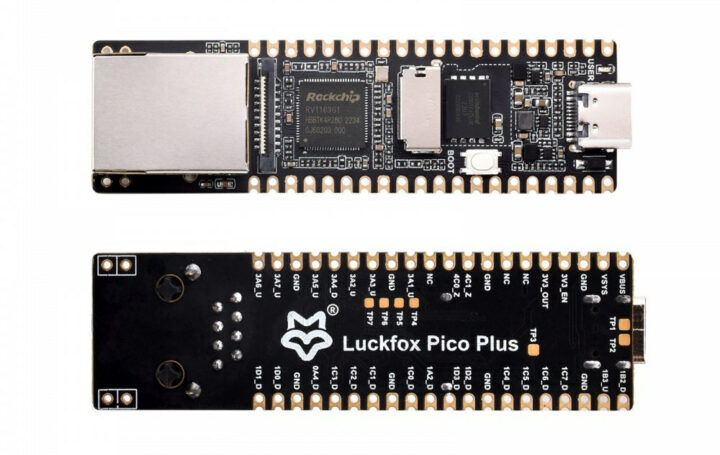
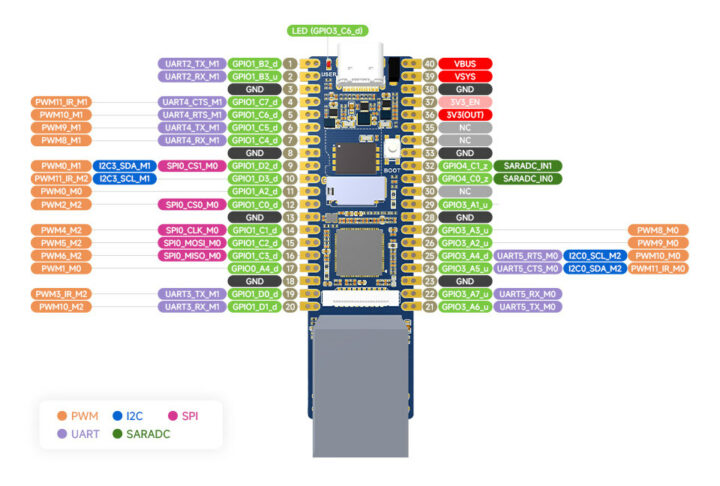
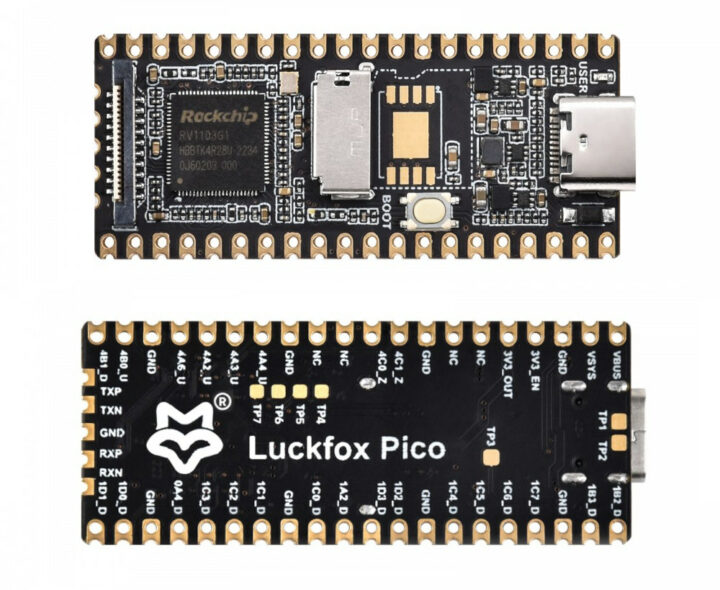
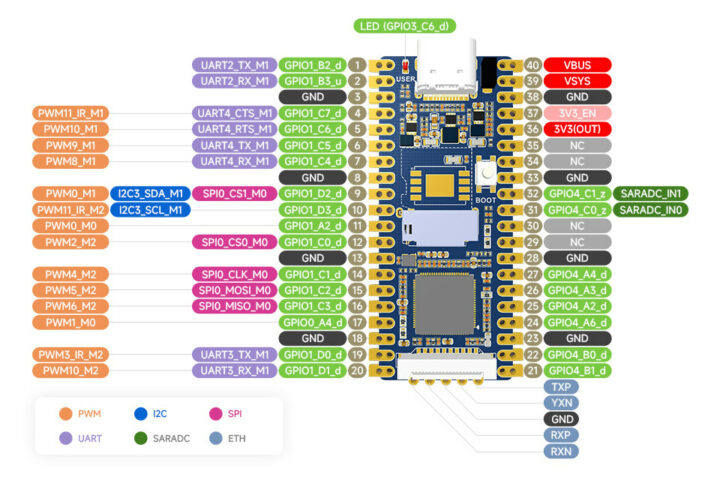
The Rockchip RV1103 boards run a lightweight version of Linux with Busybox that boots from a microSD card on the Pico board and from the SPI flash on the Pico Plus board. LuckFox provides instructions to get started, links to the images, PDF schematics, along further information in the wiki. A VirtualBox image with the Linux toolchain and code sample is provided for Windows users, but you can also access the SDK on GitHub.
A USB to UART debug board and a USB Type-A to Type-C cable are also needed to get started, and if you want to make use the the MIPI CSI connector, the company provides a 3MP camera module based on the SmartSens SC3336 CMOS camera sensor.
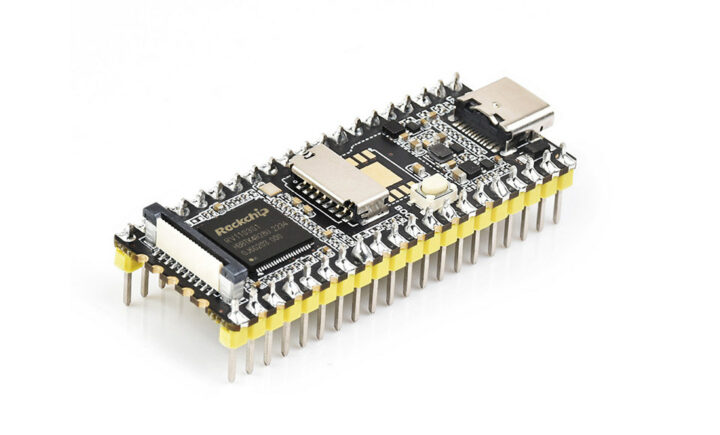
LuckFox envisions the board finding its way into Smart Home devices, industrial automation, robots and drones, smart monitoring devices, smart transportation solutions, and some medical devices.
The LuckFox Pico and LuckFox Pico Plus Linux camera boards can be purchased on Aliexpress for $10.79 to $16.19 plus shipping with the price depending on the selected model and whether soldered headers are required. The camera can be found on a separate page on Aliexpress for about $15. You’ll also find the boards on LuckFox’s own store and Waveshare.
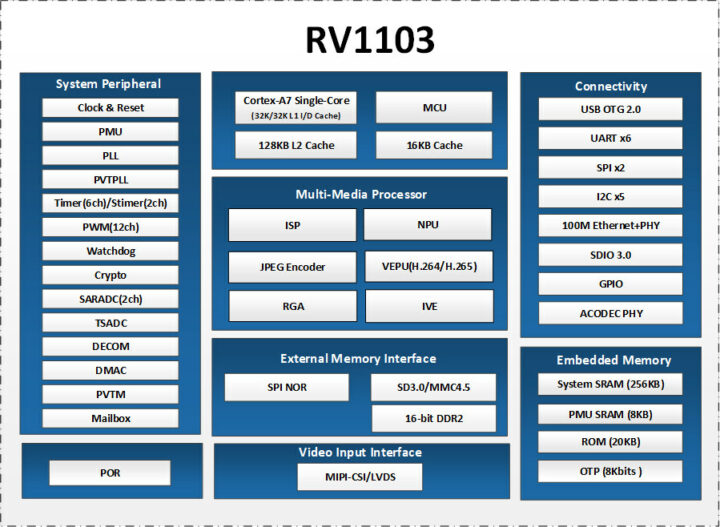

Jean-Luc started CNX Software in 2010 as a part-time endeavor, before quitting his job as a software engineering manager, and starting to write daily news, and reviews full time later in 2011.
Support CNX Software! Donate via cryptocurrencies, become a Patron on Patreon, or purchase goods on Amazon or Aliexpress


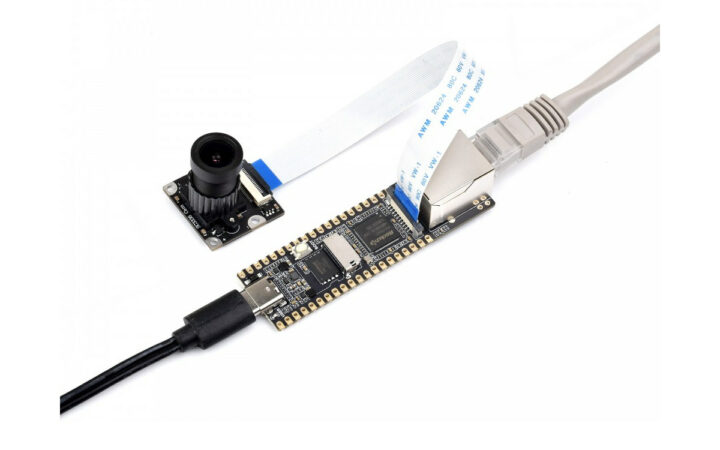



1Gb = 128MB
Also available via WaveShare store on Amazon US.
Can’t determine whether it’s Linux v5.4 or v5.10 but either are modern enough to be usable.
It’s Rockchip as such 5.10. Though they’re not on latest BSP version (5.10.160) but still use 5.10.110 which IMO is a bad sign.
This looks like another Chinese junk product. No compile schematic, I was not able to find complete datasheet for the processor, no user manual. To speak nothing if one decide to program the MCU. I did purchase many different Chinese processors with similar issues and the Chinese companies just do not provide any tech support. Just waste of time and money.
Search harder….
https://whycan.com/p_81040.html
This info is nothing. There is no even pin description … Some Chinese sell SDK on Taobao, but not really sure what it contains.
The Rockchip RV1103 datasheet and developer guides can also be found in the LuckFox wiki, specifically in the Download section.
The datasheet is extremely short and incomplete, the developer guides – mostly describes APIs. I need register description and maps, compiler and examples for the MCU. I had enough purchasing Chinese unsupported products. When issues appear – no support. The latest Bouffalo Lab BL808. No Linux – WiFi and USB drivers … What I can use this chip for ? The Chinese just advertise lots of features, but they are not supported.
You should just buy products from Intel or NXP only. Then you will be happier.
If you find Chinese chip too hard to use, then don’t use them.
You can give MPUs from Ingenic Semiconductor a try. They have complete datasheets, programming manuals, and schematic/layout examples publicly released. The X1000 series supports RAM standby at 3mW and has mainline Linux support. https://github.com/Ingenic-community/datasheets
Presumably you are Mitko on Whycan. You’ve worked with enough Chinese chips to know GPL is no existing in the country, everything is proprietary and needs to be bought with an NDA. If you have a problem with that, don’t but a Chinese chip other than the selected well supported few, and forget about multimedia. I know you are pro-Russia Bulgarian, but you might find it helpful if you show a bit more affection to our Ukrainian dude Ozelot. This guy knows a lot about Chinese SoCs.
Interesting, that’s very much in the spirit of @dgp’s Breadbee. With 128MB flash and 64MB RAM on chip, there’s plenty of room to run advanced applications. It could be interesting for signal samplers or generators, JTAG probes based on OpenOCD, and a lot of other usages of course.
Hi Jean,
Thank you this writeu-up, I recently bought Luckfox pico Pro Max and the Camera module SC3336 (B).
Please, do you know if the camera pinout is compactible with.
https://www.aliexpress.com/item/1005005919904877.html
I want to use the camera but wish to cross my leg if from Luckfox and STM32H7.
whichever work best.